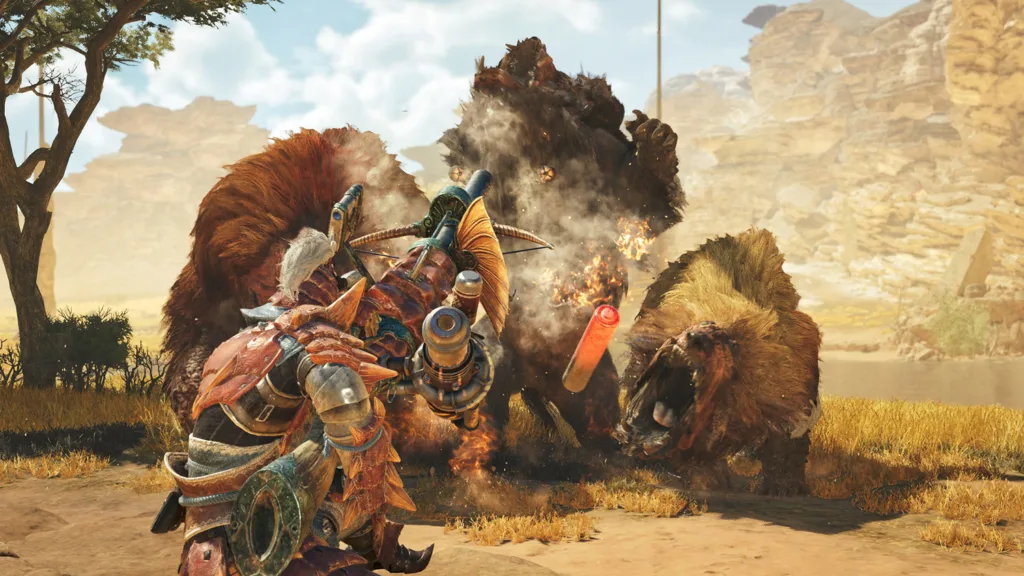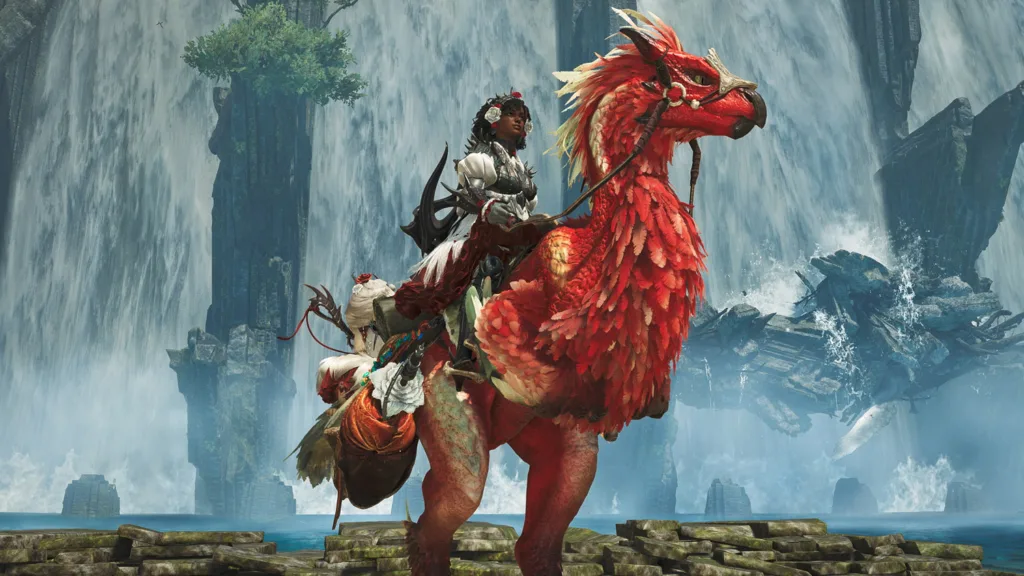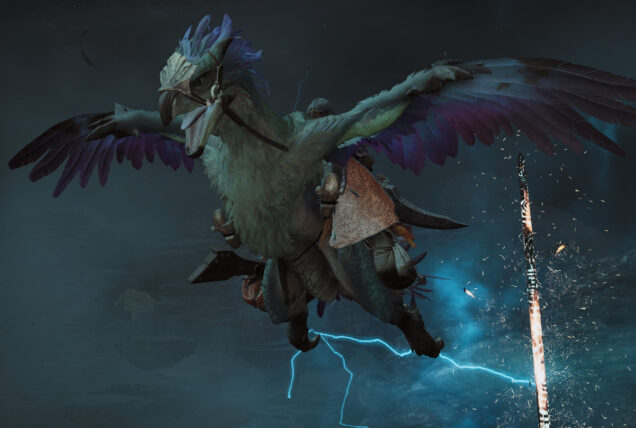
Akiyuki Morimoto has been with Capcom for 17 years, joining the company as a new graduate in 2008. With a university background in culture, arts, and religion, he explored a broad range of subjects driven by personal curiosity—though few were directly related to music. He began his career working on Lost Planet 2, where he handled music data implementation and quality checks, gaining valuable insight into the fundamentals of game development. He later composed numerous tracks for Resident Evil 6 and contributed to its interactive music direction. For Resident Evil 7: Biohazard, he served as lead composer, drawing inspiration from musique concrète to shape the game’s distinctive audio identity.
His first project on the Monster Hunter series was Monster Hunter World: Iceborne; Monster Hunter Wilds marks his second collaboration with the team. Outside of work, he enjoys watching movies and TV dramas, whether in theaters or on streaming platforms.
How did you get started in the world of sound and music for video games? What are your responsibilities as a member of the sound & music team for Monster Hunter Wilds?
Video games have been a familiar part of my life since childhood. Back then, graphics and music weren’t as refined as they are today, and memory limitations were significant. Even so, I was deeply moved by the creativity and ingenuity that developers used to create compelling experiences within those constraints. That emotional impact became a formative experience for me.
I was especially fascinated by how music could expand a game’s world and elevate key scenes. I developed a strong interest in the depth of sound design and the synergy between audio and visuals. Realizing that people were behind these moving experiences sparked my admiration for the world of game sound.
The Monster Hunter series has a history spanning over 20 years, and its music has earned high praise. While we respect the rich world-building that’s been cultivated over time—and ensure long-time fans continue to enjoy the experience—we approached Monster Hunter Wilds with a mission to bring a fresh musical identity to match the game’s new feel.
I see it as a vital responsibility to create work that allows both existing and new players to fully enjoy the essence of Monster Hunter while also experiencing the unique identity of Monster Hunter Wilds.
With the introduction of seasonal shifts that impact the world and gameplay, how did you approach composing music and ambient audio that reflects these seasonal transitions?
The shift toward a seamless gameplay experience significantly influenced our overall musical approach.
Let’s start with the hunt music. In Wilds, large monsters can form packs, which causes a player’s sense of threat to shift dynamically during hunts. To reflect that, we created four major variations for each locale’s hunt theme. These variations switch based on the total “monster threat level”—an internal parameter we assign to each monster. For example, when only one Chatacabra is present, the Level 2 variation plays. If a Doshaguma joins the scene, the threat level rises and triggers Level 3. If another Doshaguma appears, it escalates to Level 4.
Since the threat level constantly changes, we designed the transitions between variations to feel natural. In some cases, we skip intros and jump directly into the middle of a track. In others, we maintain a shared tempo, rhythm, and motif across variations, adjusting the arrangement to reflect rising or falling levels of tension.
For lower threat scenarios, we use distinctive instruments that represent each locale to create a sense of unity with the environment. For higher threat moments, we emphasize danger with rich orchestral sounds and synthesizers. However, because these transitions are so smooth, players may not always notice when the music shifts. To address this, we assign symbolic qualities to motifs and instruments, making them more recognizable.
Another key feature of this title is its rich story. To help players enjoy both narrative and gameplay seamlessly, we focused on the musical transitions—or “baton passes”—between in-game moments and cutscenes, and vice versa. This kind of transition is a unique aspect of games, so we aimed not only for seamlessness but also for emotional impact. We wanted these moments to enhance storytelling and deepen immersion.

With the introduction of seasonal shifts that impact the world and gameplay, how did you approach composing music and ambient audio that reflects these seasonal transitions?
Let me explain how we approached music to reflect the shifting weather phases: Fallow, Inclemency and Plenty.
Starting with the most striking phase, Inclemency, we blended synthesizer-generated “noise” into the environmental sounds to create a sense of tension that reverberates throughout the scene. Each locale experiences extreme weather differently, so we tailored the tone of the “noise” to match the area’s specific characteristics. For example, in the Windward Plains, the sound evokes sandstorms and thunder, while in the Oilwell Basin, it suggests fire pillars and magma. We carefully designed and directed elements to suit the flavor of each region. We also incorporated this same “noise” into the hunt themes for each locale’s apex predator.
This approach comes from our concept that, in Wilds, synthesizer “noise” represents the “sound of the Forbidden Lands”—a sound embedded into the world’s lore. We want players to feel the alien atmosphere unique to the Forbidden Lands and ask themselves why such artificial sounds exist, encouraging them to reflect on the deeper meaning of the setting.
Beyond the environmental soundscapes of Inclemency, we also adapted the village themes for Kunafa Village and Azuz, the Everforge to change based on the weather. These tracks reflect the living environments and cultures of the people in those villages, which are directly affected by seasonal shifts.
For example, during Fallow in Kunafa, villagers prepare for the approaching sandtide season. When Inclemency hits, they mostly stay indoors, waiting for Plenty. Musically, Fallow features tension and a sense of calm before the storm. During Inclemency, the music stops entirely. Then, in Plenty, the music transitions into a bright, free, and joyful tone.
In contrast, while Azuz is in Inclemency, a Firespring Festival takes place, creating a frenzied and celebratory atmosphere—the opposite of Kunafa. Meanwhile, villages like Sild and Suja remain unaffected by seasonal weather, so their music stays consistent throughout.
In this way, we rooted the music in the lives of the people in each region. As the weather changes, the music evolves alongside it—deepening immersion and enhancing storytelling throughout the world of Wilds.

Each monster in the game has its own unique musical identity. What’s your process for creating these themes, and how do cultural or regional musical influences factor in (if at all)?
Each monster has distinct characteristics and a specific background, so when we compose music, we begin by thoroughly understanding the target monster. We review a variety of materials—including the project proposal, art assets, and story documents—to explore potential musical directions.
Take Rey Dau as an example. Rey Dau is positioned as the “Apex Predator of the Windward Plains,” so we needed to incorporate elements that reflect the culture and atmosphere of that locale.
In the Windward Plains, we used instruments such as the Kora, Duduk, Morin Khuur, and Bone Flute to express the region’s unique cultural flavor. For apex predators like Rey Dau, we also blended in elements from the Inclemency phase—specifically the synthetic “noise” created by the synthesizer. We used this layered instrumentation that combined orchestra, regional instruments, and synthesizer to convey the overwhelming presence of an apex predator.
For the melody, we focused on capturing the thrill of facing these monsters in battle. In Rey Dau’s case, we built musical phrases and rhythms inspired by lightning strikes. We also drew heavily from the visual references—models, animations, and effects—to inform our composition and ensure the music brings out the monster’s unique qualities during the hunt.
Were there any new tools, pipelines, or audio middleware innovations you used to support the scale and detail of Wilds? How did these impact your creative workflow?
In the music production for Monster Hunter Wilds, we improved both our quality standards and production efficiency by standardizing tools and sound libraries across the team and streamlining the workflow through to final output.
Synthesizers played a major role in this title’s music. We primarily used Zebra2 by u-he to design sounds. Our manipulators were saved as Zebra2 patch files and we shared them with the team to ensure a unified musical approach that aligned with the game’s setting.
For orchestral sounds, the core of many tracks, we used the Berlin Series by Orchestral Tools. Because we recorded the orchestral elements at Teldex Studio in Berlin, we selected orchestral libraries with the same sonic character to maintain consistency across all recordings.
We also adopted Dorico by Steinberg as our notation software. We used it to handle orchestration, which significantly improved communication between composers and orchestrators and helped keep the production process smooth and efficient.
Is there a particular piece, moment, or design element in Monster Hunter Wilds’ audio that you’re especially proud of? Looking ahead, what’s something you hope to innovate on in future projects?
The main theme, “The Beauty of Nature,” embodies the world and story of Monster Hunter Wilds. As players progress through the game, the various elements woven into the theme gradually reveal themselves. Especially where the story is richly developed, the main theme is a deeply layered piece that offers new meaning when players listen to it again after completing the game.
For Wilds, we took on several challenges: expressing emotion while keeping transitions seamless, capturing a realistic texture that immerses players in each locale, and embedding narrative elements of the world and story into the music itself.
At the heart of all this is our desire to pass down the richly diverse world of the Monster Hunter series to a new generation and ensure that players continue to experience it as something fresh and exciting. As long as the series continues, I believe the music will continue to evolve and rise to meet new creative challenges.



